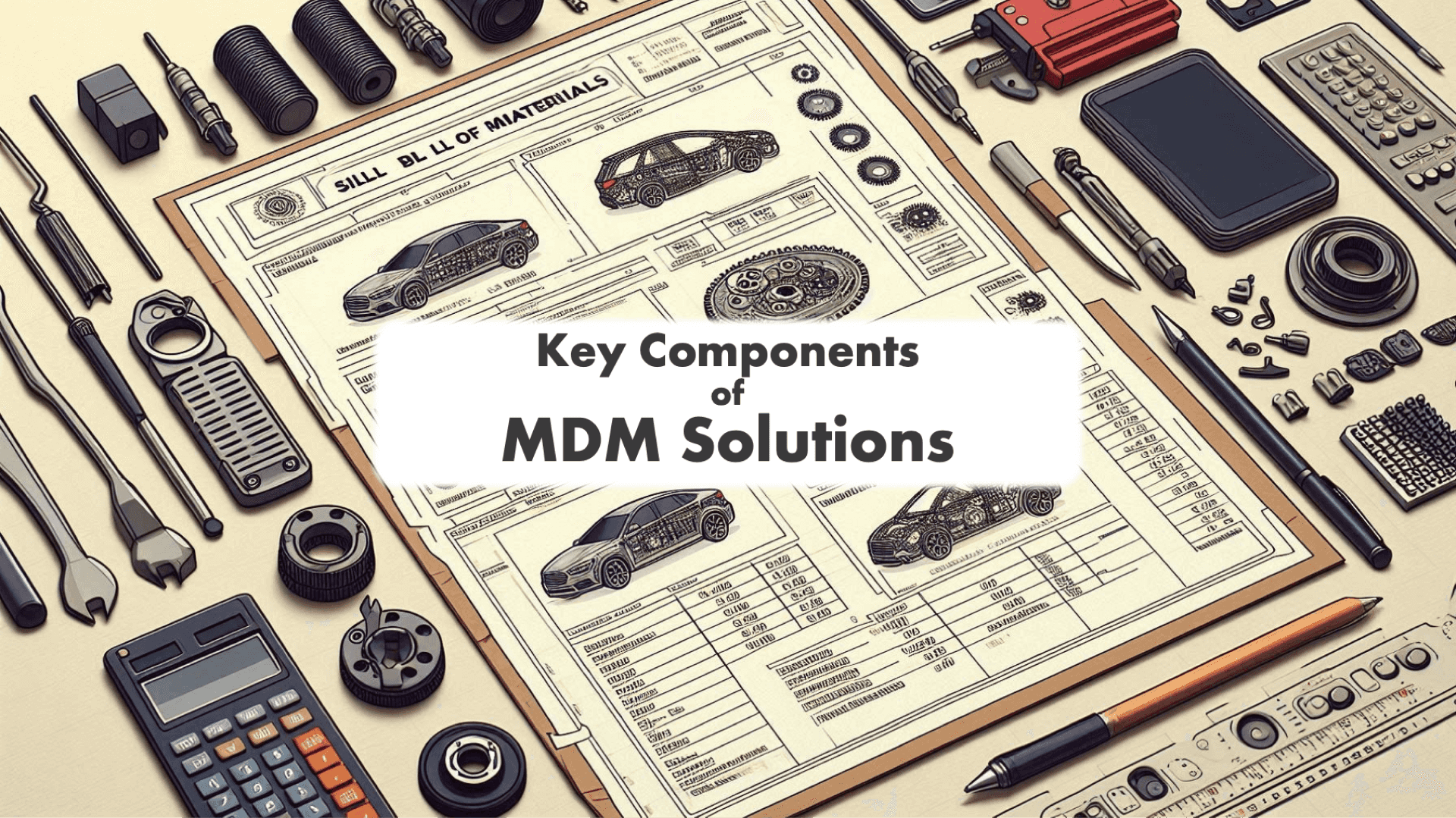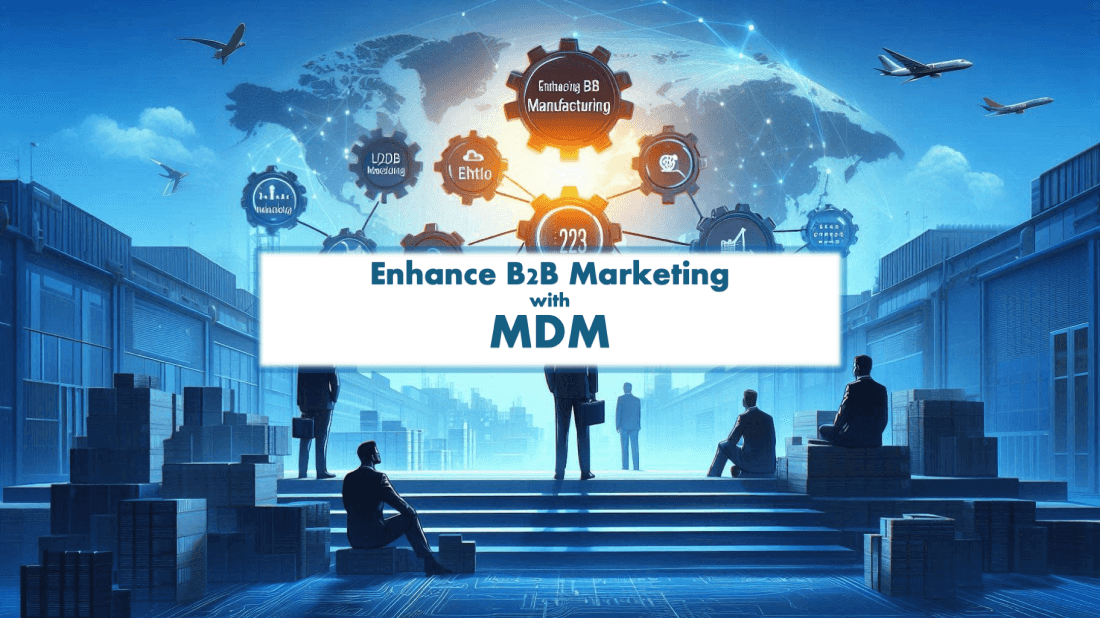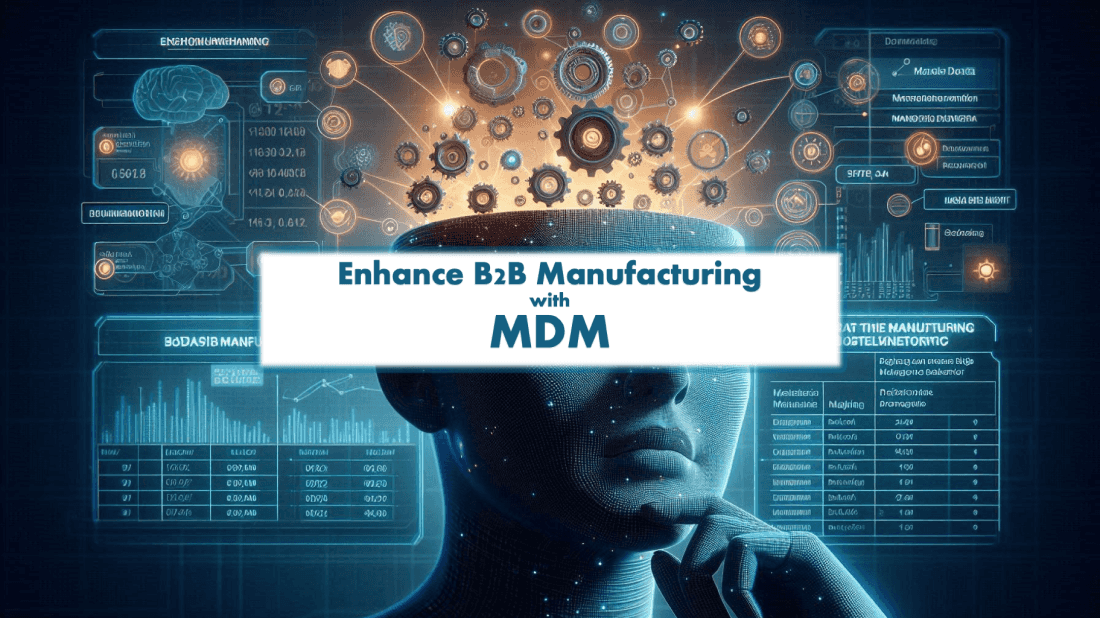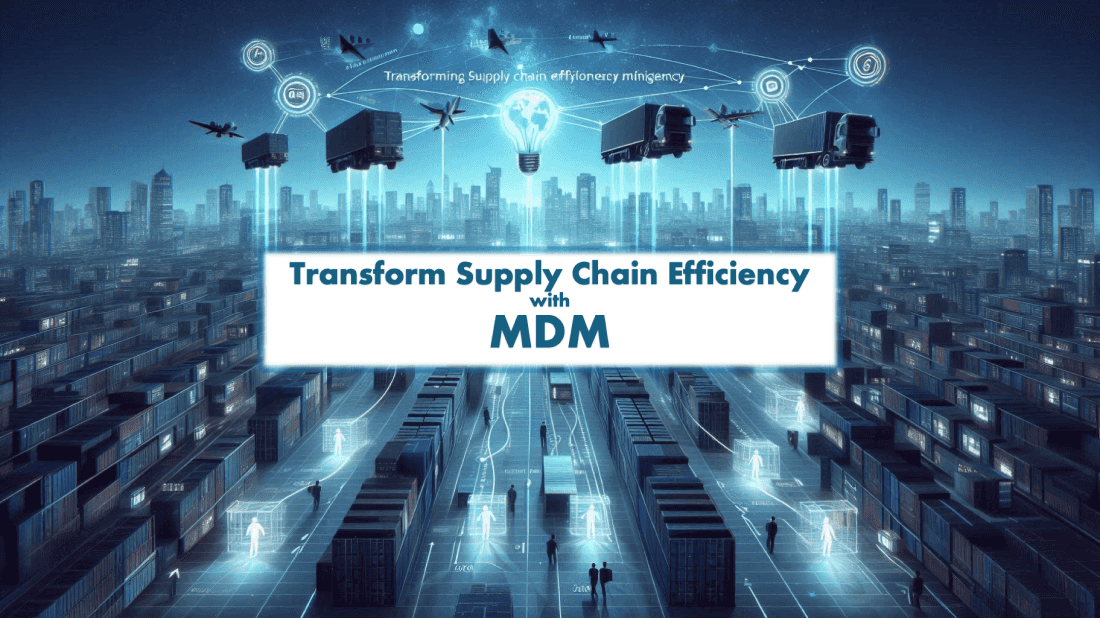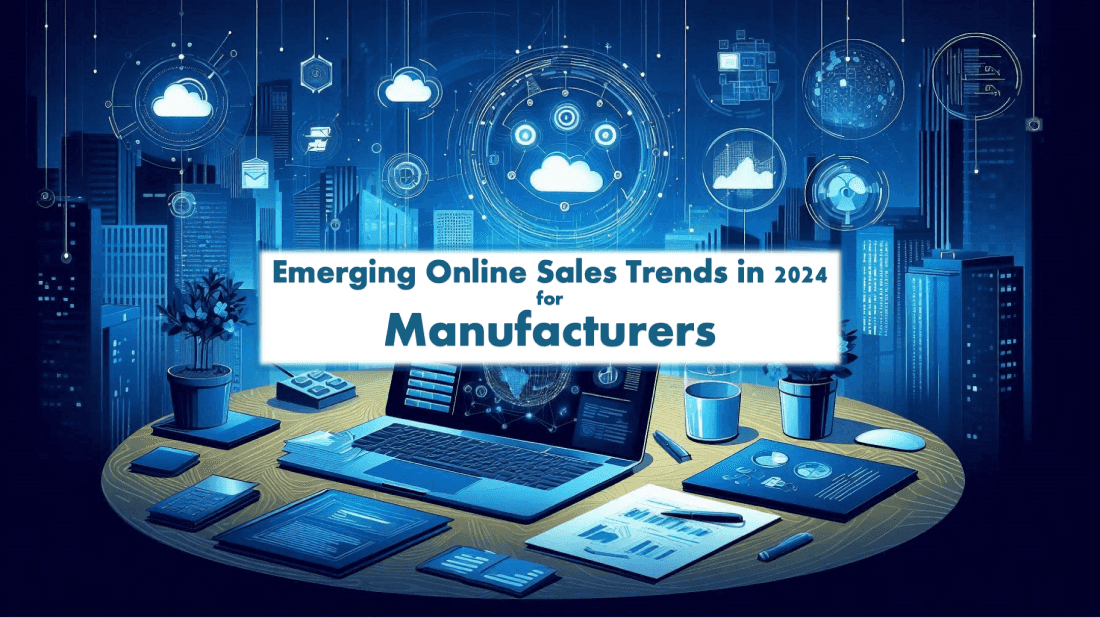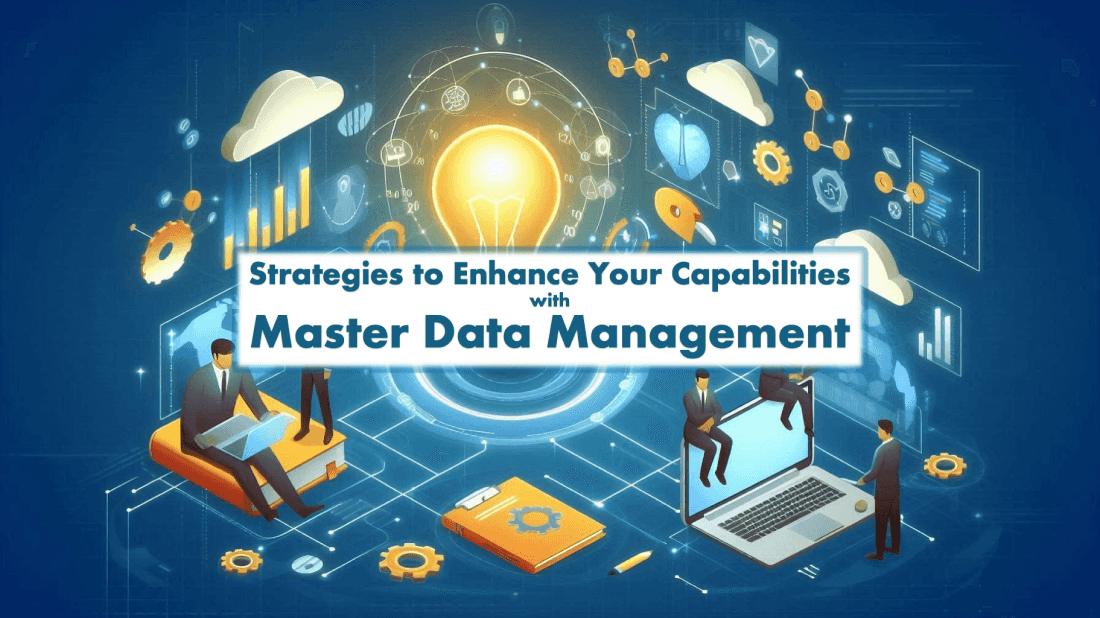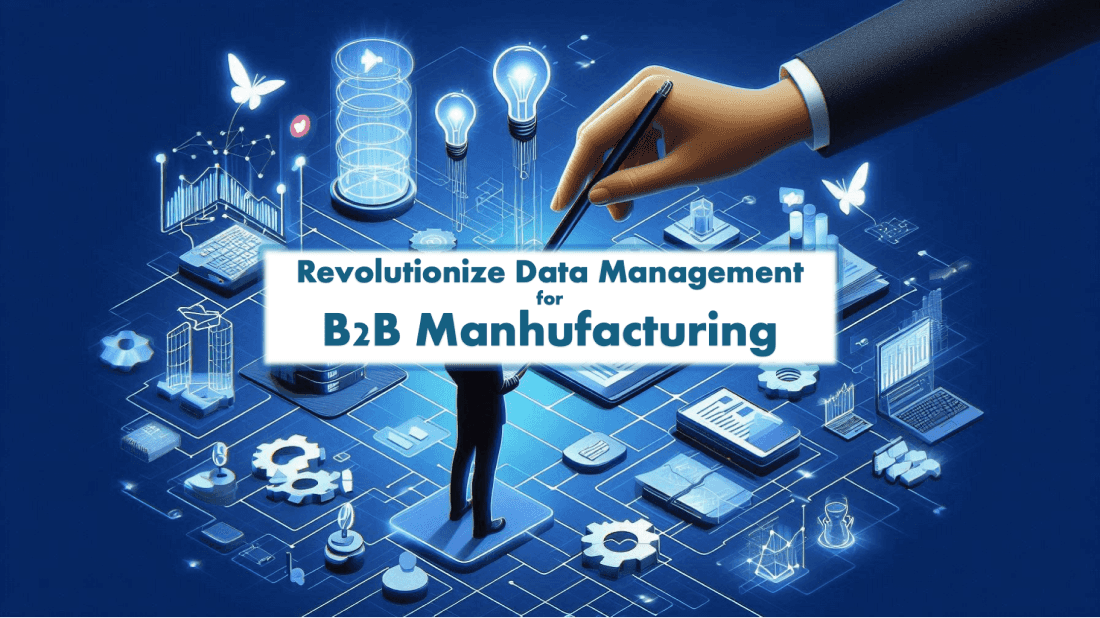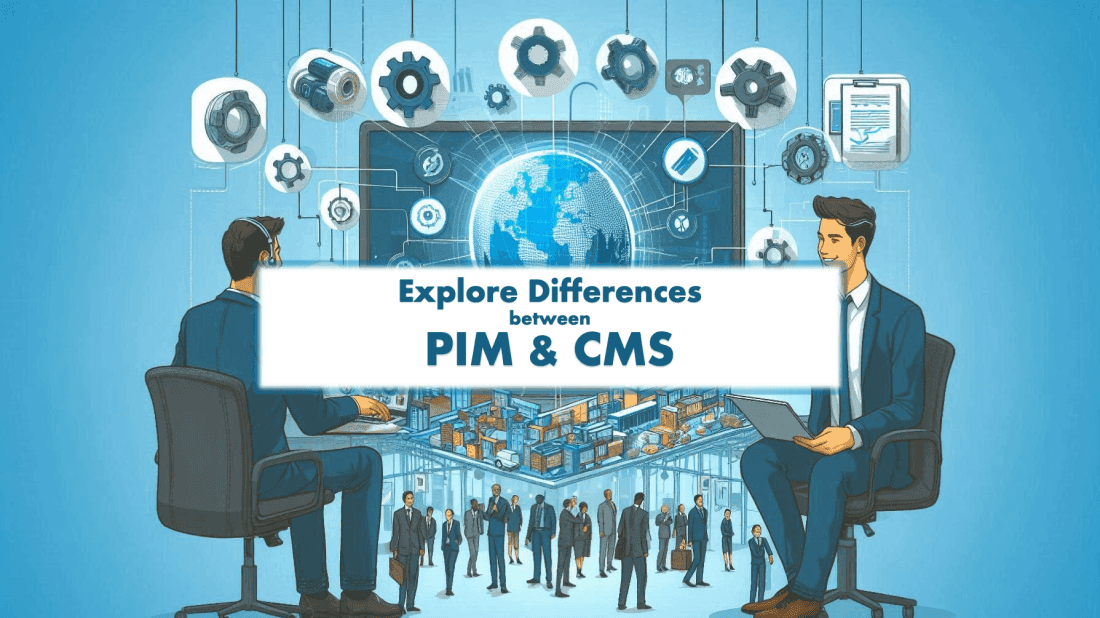May 17th, 2024
PIM vs ERP: Choosing the Right Data Management Solution for B2B Manufacturers
Categories:Product Information Management SystemIn the world of B2B manufacturing, growth is driven by innovation and the ability to manage vast amounts of data across various channels, systems, and markets.
To handle these growing informational needs efficiently, forward-thinking enterprises often leverage two complementary systems: Enterprise Resource Planning (ERP) and Product Information Management (PIM).
ERP systems are designed to optimize back-office functions such as supply chain, inventory, accounting, and HR, serving as the backbone of operational integrity. On the other hand, PIM systems centralize, manage, and enrich rapidly changing product information to fuel omnichannel experiences. Every system offers distinct advantages in handling data throughout businesses. Yet, when ERP and PIM are utilized in conjunction, they can enhance data-oriented resource planning and propel enduring expansion.
Data Flexibility: ERP vs PIM
Both ERP and PIM systems aim to consolidate data from disparate systems into a single source of truth, eliminating silos and ensuring high data quality. However, they differ significantly in terms of data structure and flexibility.
Understanding ERP
ERP software is a simple database system that offers a comprehensive perspective of a company's internal resources, ranging from financials to human resources to supply chain management. It facilitates stringent verification processes necessary for accounting, HR, and other operations.
Defining PIM
On the other hand, a PIM system acts as the core platform for the intake, management, and enhancement of product data into top-tier information for any internal or external communication channel. Built to organize and manage today’s product information and future data, PIM systems leverage elastic data models to accommodate growth, making them critical in an omnichannel marketplace.
Characteristics of ERP and PIM Systems
Deciding between ERP and PIM, or opting to use both, is largely contingent on your business requirements. Here are some key features:
Features of ERP:
- Management of supply chain
- Planning and implementation of manufacturing
- Management of inventory and warehouse
- Procurement and relations with suppliers
- Management and completion of orders
- Financial and accounting management
- HR, payroll, and performance management
ERP integration provides the rigor needed for data integrity and regulatory compliance, helping businesses achieve greater operational efficiency and visibility across core business functions.
Features of PIM:
- Management and enhancement of product information
- Assistance with digital asset management
- Real-time data analysis through Digital Shelf Analytics (DSA)
- Comprehensive options for integrating with your technology stack
- Distribution and syndication across multiple channels
- Globalization and localization of content in multiple languages
With PIM, enterprises can ensure their product content is compelling, consistent, and tailored to meet the expectations of today’s B2B customers.
ERP vs PIM: Key Differences
While both ERP and PIM systems consolidate business-critical data, key differences emerge. ERP systems concentrate on refreshing stock data and enhancing internal processes, while PIM systems guarantee the display of enriched, precise product details across various channels. Unlike ERP, which handles back-office functions, PIM platforms centralize and organize product content and data for external channels, promoting enhanced customer experiences and omnichannel consistency.
For instance, consider a B2B manufacturer that produces industrial machinery in various configurations. In an ERP, each configuration might be treated as a separate product with unique price points and attributes. A PIM system, however, simplifies this by consolidating configurations logically, making data management more efficient and enhancing the customer experience.
Integrating ERP and PIM Systems
While ERP and PIM systems have distinct purposes, integrating them can unlock comprehensive efficiency. An ERP alone cannot fully standardize, enrich, or syndicate product information across all touchpoints. Nonetheless, by collaborating with a PIM system, companies can leverage their internal processes to enhance customer experiences.
For example, a B2B manufacturer selling products across multiple channels can use ERP to manage accounting, inventory, and order fulfillment, while a PIM system centralizes and organizes the product data, ensuring consistency and accuracy across all channels.
Choosing the Right Solution for Your Business
The PIM vs ERP debate ultimately comes down to the specific needs of your business. If you need a platform to consolidate back-office data, an ERP system will suffice. Nonetheless, if you prioritize precise data, improved client satisfaction, effectiveness, and steady expansion, a PIM system is indispensable.
Benefits of PIM for Manufacturers
For manufacturers, especially in the B2B sector, leveraging a PIM system offers numerous benefits:
- Improved Data Quality: PIM systems ensure that product data is accurate, consistent, and enriched, reducing errors and enhancing customer satisfaction.
- Enhanced Product Information: PIM systems allow for the detailed enrichment of product data, making it more informative and engaging for customers.
- Streamlined Processes: By centralizing product data, PIM systems streamline internal processes, reducing manual work and improving efficiency.
- Better Customer Experience: Accurate and enriched product information across all channels leads to a better customer experience and increased loyalty.
- Scalability: PIM systems are designed to handle growing amounts of data, making them ideal for businesses looking to expand their product lines or enter new markets.
Best Practices for Implementing PIM Solutions
When implementing a PIM solution, consider the following best practices:
- Define Clear Objectives: Understand what you aim to achieve with a PIM system, such as improving data quality or enhancing customer experience.
- Involve Key Stakeholders: Engage all relevant departments, including marketing, IT, and product management, to ensure the PIM system meets all needs.
- Choose the Right PIM Software: Select a PIM solution that fits your business requirements. Look for features like data enrichment, digital asset management, and integration capabilities.
- Ensure Data Governance: Establish data governance policies to maintain data quality and consistency.
- Plan for Integration: Ensure your PIM system can integrate seamlessly with other systems, such as ERP and CRM, for a unified data management approach.
Conclusion
For B2B manufacturers, leveraging both ERP and PIM systems can provide a comprehensive solution for managing data and driving growth. Understanding the unique benefits of each system will help you make an informed decision and implement the best product information management strategy for your business.
By utilizing the best PIM software and following best practices, manufacturers can ensure they have the right tools in place to manage product information effectively, drive efficiency, and enhance customer experiences. Whether you choose a cloud-based PIM, an enterprise PIM, or a PIM SaaS solution, the benefits of PIM for manufacturers are clear. Implementing a robust PIM system can transform your data management processes and support sustainable growth in the competitive B2B landscape.
Furthermore, PIM solutions enable better management of product catalogs and data import processes, crucial for manufacturing companies looking to maintain accuracy and consistency across their product lines. Manufacturers managing vast amounts of product data can significantly benefit from the scalability and flexibility offered by modern PIM systems.
Understanding the key differences between ERP and PIM, and recognizing the unique advantages of each, is essential for manufacturing companies aiming to streamline their business processes and improve overall efficiency. With the right combination of ERP and PIM systems, businesses can optimize their operations, enhance customer satisfaction, and drive sustainable growth.
Summary of Neurologik ProductHub
At Neurologik.io, we offer the ProductHub solution, an all-in-one PIM, PDM, MDM, and DAM system designed specifically for B2B manufacturers. Our platform centralizes, enriches, and synchronizes product data, ensuring accuracy and consistency across all channels. By significantly reducing integration costs and enhancing operational efficiency, Neurologik.io’s ProductHub helps manufacturers maintain seamless, up-to-date product information, improving market responsiveness and driving business growth.
Request a demo to learn more about the most advanced system for B2B manufacturers.
